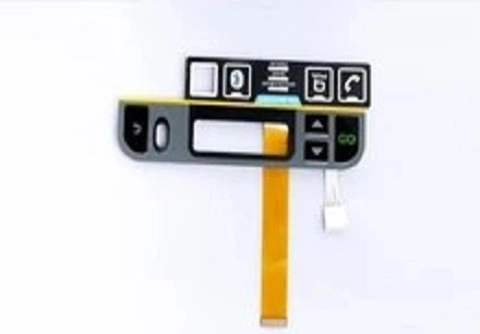
Welcome to the intricate world of dome switch keypads! These components might seem mundane, but their potential for customization makes them invaluable in various applications. This article explores how they can be tailored to meet specific needs, focusing on the mechanics, materials, and design considerations that go into creating the perfect dome switch for any application.
Dome switch keypads are a type of tactile switch that plays a crucial role in many modern electronic devices. They are fundamental yet fascinating components, offering a reliable and efficient way for users to interact with electronic systems. Dome switches are widely used in everything from consumer electronics and home appliances to industrial machinery and medical devices. The simplicity of their design, combined with their tactile feedback and long-lasting performance, makes them an integral part of many user interfaces.
A dome switch typically consists of a dome-shaped metal component (referred to as the Metal Dome) that serves as the core of the switch mechanism. When pressure is applied to the surface of the dome switch, the metal dome compresses and flexes, closing the circuit underneath. This physical action completes the electrical circuit, sending a signal to the device to activate the corresponding function or response.

Size and Shape: Customizable to fit any device, large or small.
Tactile Feedback: Adjusted by varying the Metal Dome load, which determines the force needed to activate the switch.
Graphic Overlays: From simple designs to complex, colorful patterns.
The Metal Dome load is an essential factor in dome switch design, determining the force needed to activate the switch. It directly influences tactile feedback and switch longevity.
Materials like stainless steel and nickel silver are commonly used for their resilience and consistent response. Stainless steel provides strength and durability, while nickel silver ensures excellent conductivity and wear resistance. These materials help maintain a consistent tactile feel and allow the dome to withstand millions of actuations without degrading.
In short, the right material choice ensures reliable performance and long-lasting usability for dome switches.
Environmental Resistance: Options for weatherproofing in harsh conditions.
Backlighting Options: Customizable for visibility in low-light conditions.
Connectivity Options: Tailored to suit wired or wireless requirements.
Dome switches are also used in military and aerospace applications, where durability and reliability are critical. These switches are designed to withstand extreme conditions such as high pressures, temperatures, and exposure to harsh environments. Customization for these applications often focuses on materials that can resist corrosion and wear, along with ensuring that switches can perform consistently over long periods.
In industrial settings, dome switches are used in control panels, machinery, and heavy-duty equipment. The durability and resilience of these switches make them suitable for environments that require a high number of actuations and exposure to harsh conditions. Custom features such as water resistance, high actuation force, and robust tactile feedback are essential for ensuring reliable operation in such demanding environments.
Dome switches are widely used in medical equipment, including control panels for diagnostic machines, portable medical devices, and patient monitors. In this sector, customization focuses on hygiene and safety, with many switches designed to be easy to clean and resistant to contamination. The switches' tactile feedback and simplicity also ensure that medical staff can operate equipment efficiently, even in high-pressure environments.
In automotive applications, dome switches are commonly found in dashboard controls, infotainment systems, climate controls, and steering wheel buttons. The ability to withstand vibration, extreme temperatures, and moisture makes dome switches a reliable choice for use in vehicles. Customization options, such as integration with LED backlighting, allow for easy operation in low-light conditions.